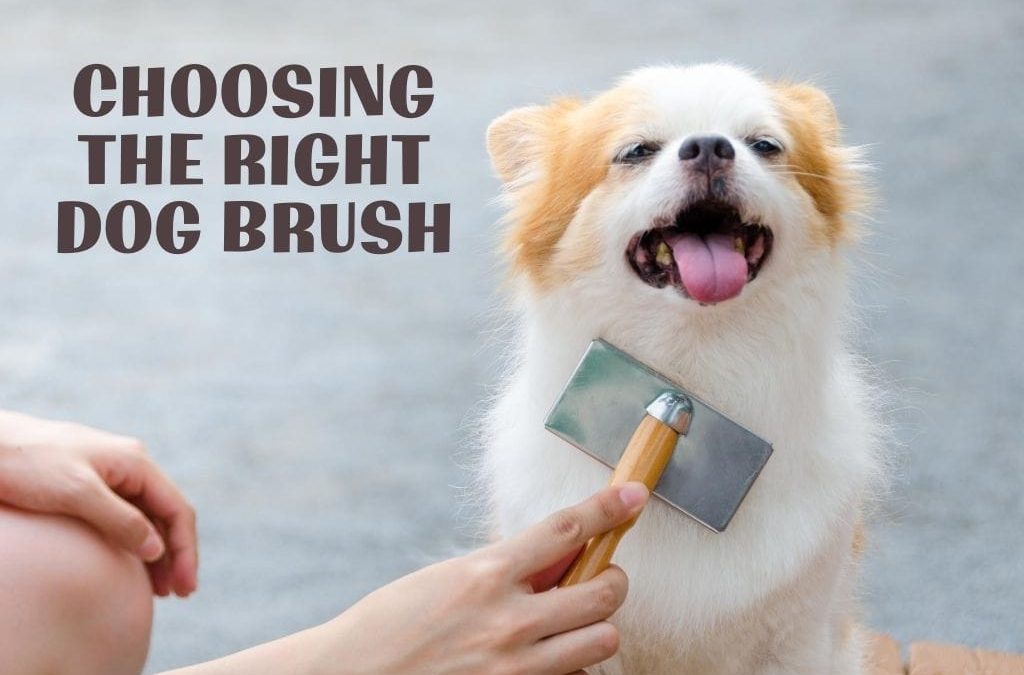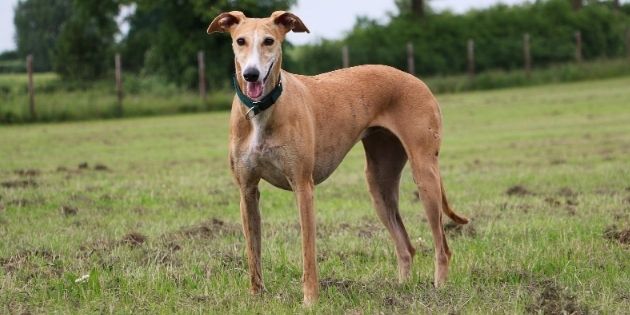Sometimes the last thing you want to do is brush your dog. Although, they generally complain far less than our kids during their grooming activities.
Even though it can feel like a chore, brushing is essential to your dog’s health. With regular brushing you are:
- Getting rid of loose and dead hair which can help reduce shedding
- Avoid matting before it becomes painful.
- Distributing your dog’s natural oils which helps keep coats soft and skin healthy.
- Keeping an eye on their overall health, checking for tangles, lesions, lumps, fleas or anything else unusual
- And it makes them look great!
What Type of Coat Does Your Dog Have?
When it comes to choosing a brush, the biggest factor to consider is your dog’s coat type and length. It’s important to find the correct type of brush for your pup. Different types of coats will need different types of brushes. First let’s look at the different types of coats.
Smooth Coat
Dogs with smooth coats will often have short, silky hair that lays close to the body. The hair grows in a single layer with no undercoat. Examples of smooth-coated dogs include Doberman Pinschers, Dalmatians, Boston Terriers, Bulldogs, Greyhounds and Weimaraners.
Double Coat
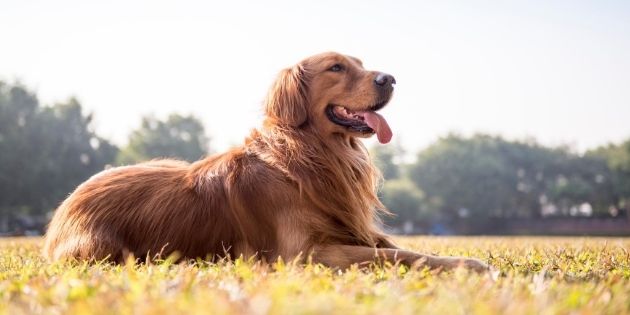
Dogs with a double coat have an undercoat. The undercoat is typically shorter than the outer coat and the hair has a dense, woolly texture. Many long-haired dogs have double coats. Examples of double-coated dogs include Labrador Retrievers, Golden Retrievers, Australian Shepherds and Border Collies.
Long Hair
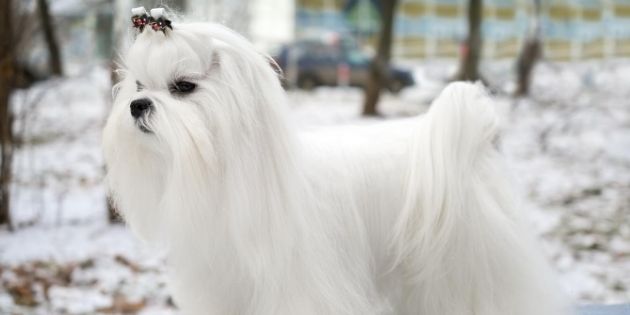
Dogs with a long-haired coat can have silky or coarse hair. Some have an undercoat and other do not. Regular grooming is essential to avoid matting and to maintain a healthy coat. Examples of long-haired dogs include Afgan Hounds, Maltese, Shih Tzus and Yorkshire Terriers.
Curly Hair
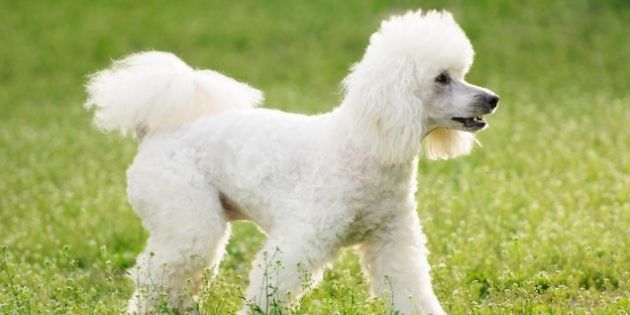
Curls can range from tight ringlets to pronounced curls. Generally curly-coated dogs do not have an undercoat and also need regular brushing to prevent matting. Examples of curly-haired dogs include Poodles, Portuguese Water Dogs, Bichons Frises and Bedlington Terriers.
4 Types of Brushes
Now that we looked at the dog coat types, let’s take a look at the most popular types of brushes and learn which may be best for your dog.
Rubber Brush
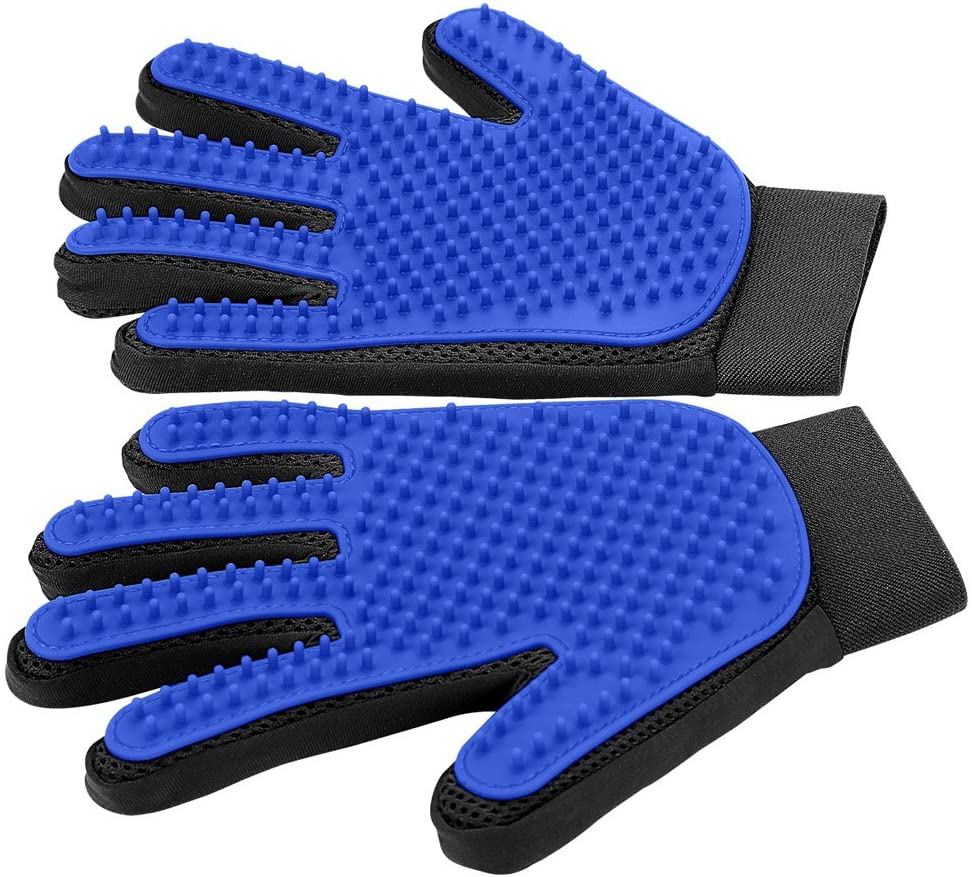
A rubber brush is an easy way to remove loose surface hair and massage your dog’s skin. Good for shorter hair. These can be a great alternative for a bristle brush, especially for dogs who do not like being brushed. Rubber brushes are usually about the size of your hand and have rounded rubber knobs. Some come in the form of a glove while others look more like a block.
Recommended Rubber Brushes: Pet Grooming Glove, Kong Zoom Groom
Bristle Brush
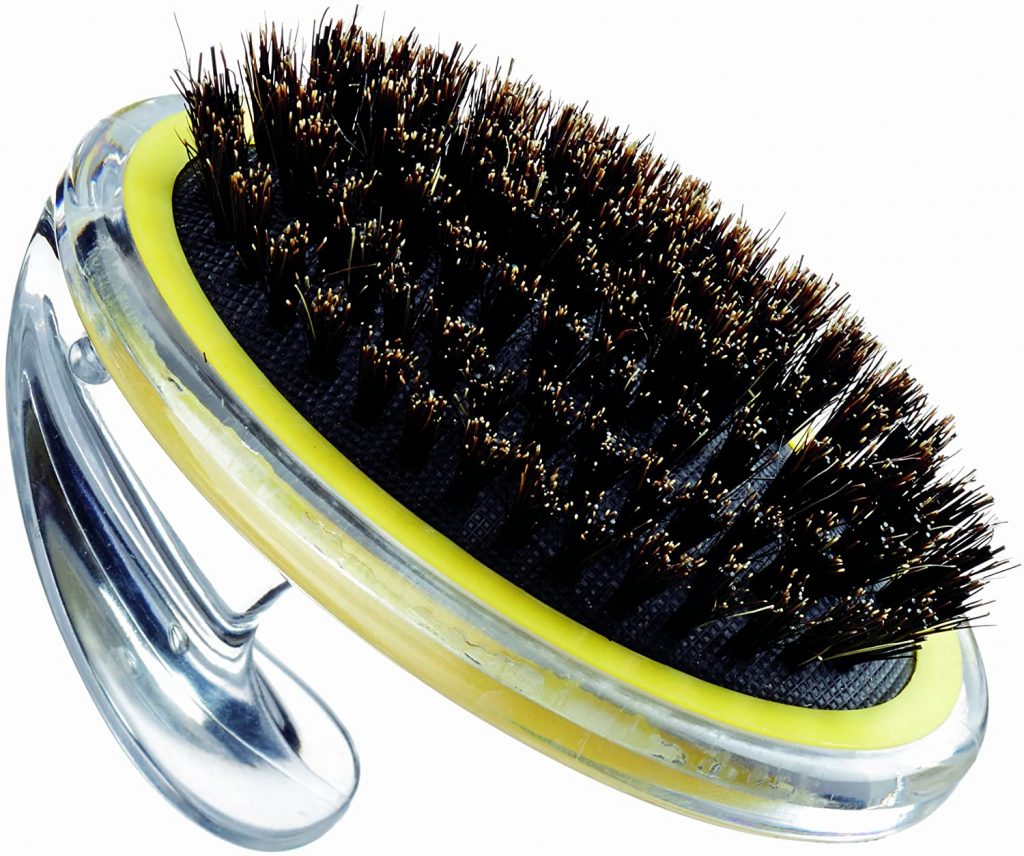
bristle brush is often combined with a pin brush because they work best together. These are great for shorter coat dogs and removing fine dirt as well as adding a shine to your dog’s coat. Regular brushing with a bristle brush will increase oil production from the skin which can help reduce shedding and improve the health of your dog’s coat.
Recommended Rubber Brushes: Conair PRODog Pet-It, Hertzko Bristle Brush
Pin Brush
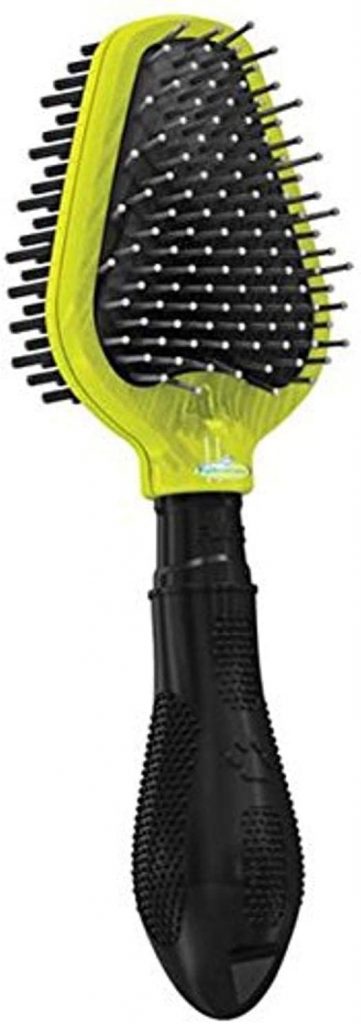
The pin brush is great all-around brush for getting out small mats and tangles from medium and long dogs. They generally have rubber or plastic tips to so they don’t irritate your dog’s skin. On thick or curly coats these are the first choice for getting out knots and matts.
Recommended Rubber Brush: FURminator Dual Grooming Brush, ConairPRO Dog Pin Brush
Slicker Brush
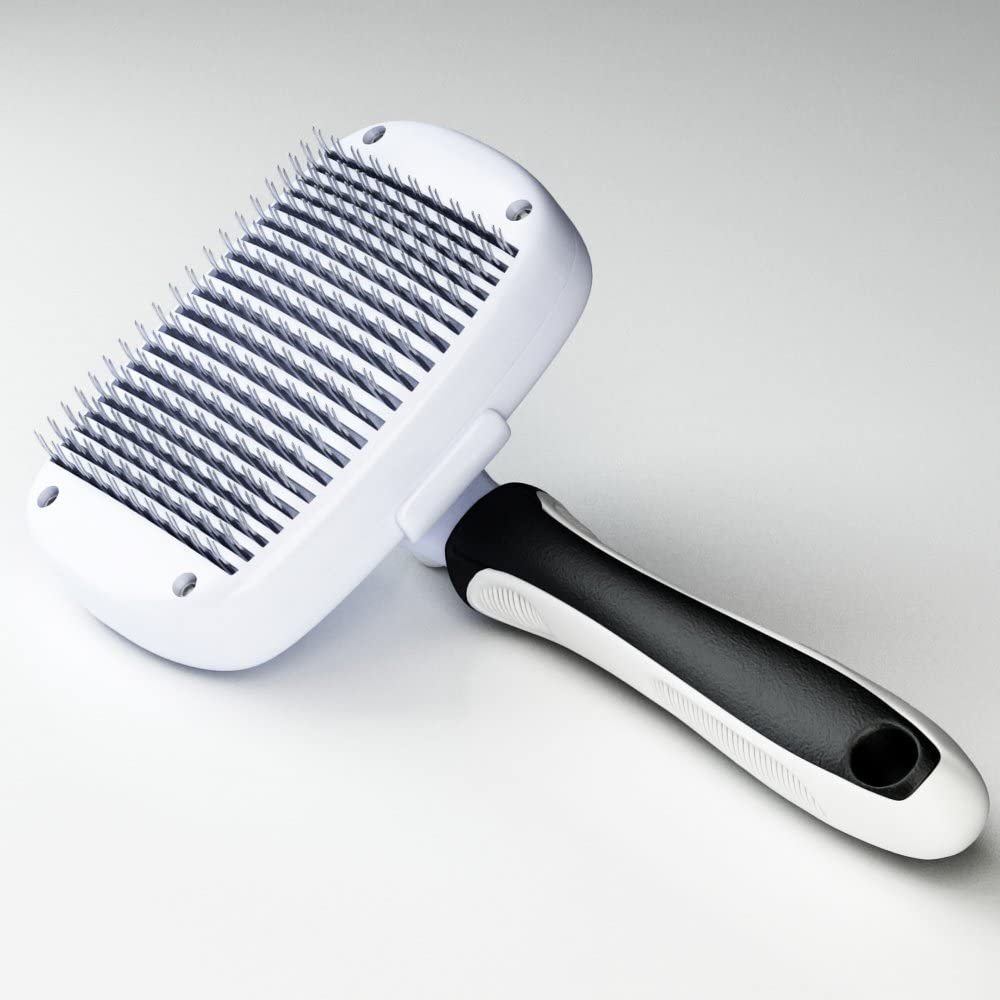
Generally used on medium to long-haired dogs, the slicker brush is used for removing matts and tangles as well as loose hair from the undercoat. These brushes have fine wire bristlesThat are angled and have protective tips to reduce skin irritation. You do need to be careful about the amount of pressure you apply while brushing and be sure to brush with the direction of the coat.
Recommended Rubber Brushes: Hertzko Self Cleaning Slicker Brush, Ruff ‘n Ruffus Slick Brush
Brushing Basics
Here’s a quick 5-step process to brushing your dog.
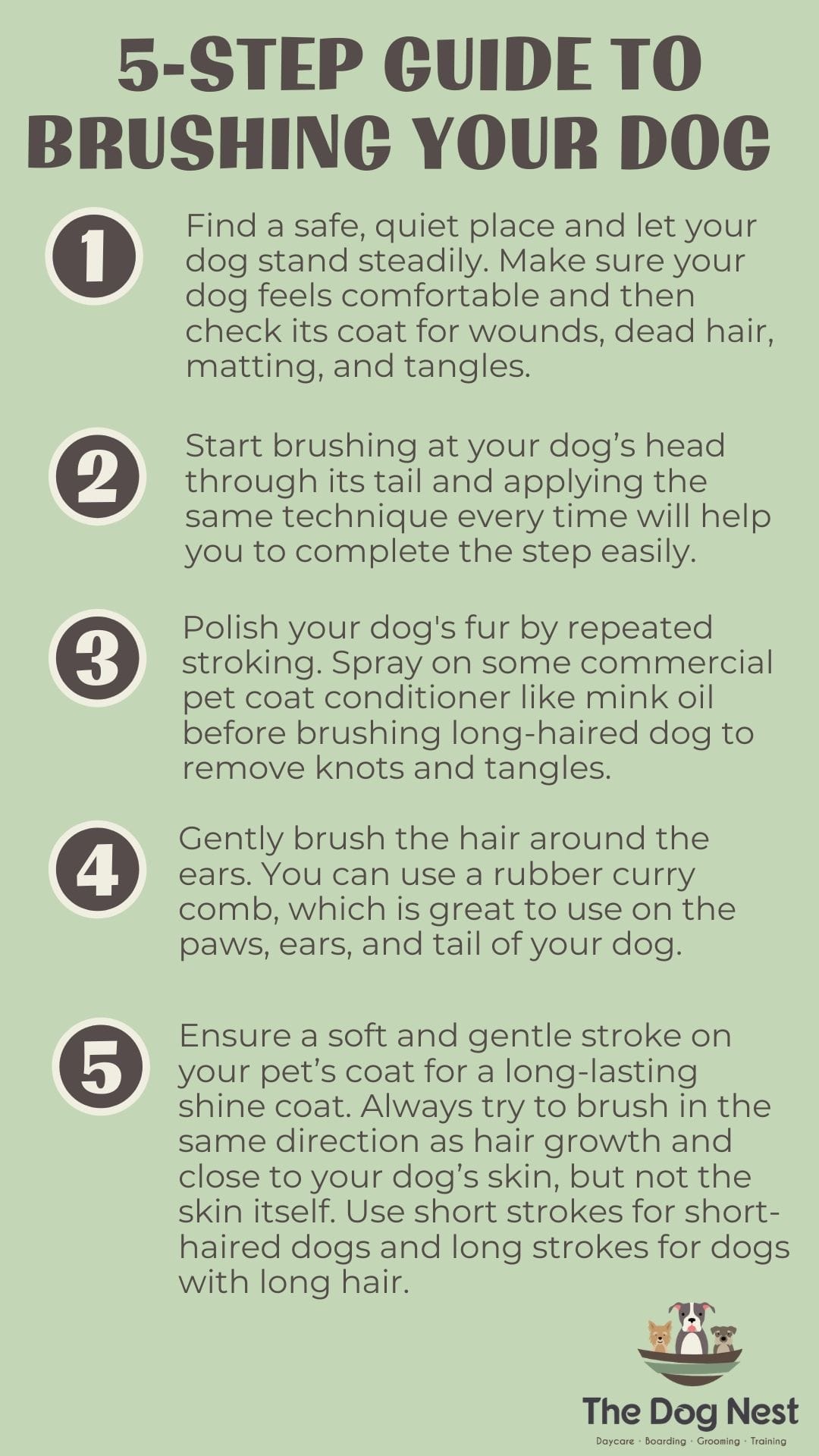
If you have the budget, buy quality brushes. Also, take everything we discussed in this article into consideration when choosing a brush. Remember that your dog’s coat and skin condition will determine what type of brush is the best fit. Be sure to talk to your groomer for advice and tips on how to best brush and groom your dog at home.

